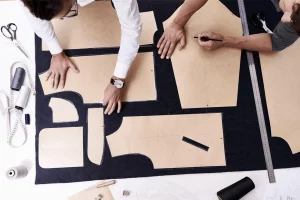
TIPS BEFORE YOU START A CLOTHING BUSINESS
Okay, get ready for vocabulary lessons! Know the difference between a clothing brand and a clothing line to point your compass in the right direction. Believe it or not, 98% of brands are making a living in the apparel business without a clear direction. Therefore most have no idea what their ultimate goal is. Part of this problem is because they never learned the type of company they are building. We will provide you with an overall understanding of this difference, so you don’t make that mistake. We will clarify your process, as it is the main ingredient that will shape your brand’s future.
WHAT IS A CLOTHING BRAND?
A clothing brand’s business primarily is dependent on short term sacrifice and long term gain. The strategies needed to build a clothing brand need to be long-term goal-oriented, including thinking about quality, overall brand consistency, and the type of clothing a designer creates.
When you initially think about starting a clothing brand or any brand, it generally needs a straightforward correlation with the current market dynamic or improving the existing market dynamics significantly by bringing something new to the table. Those who successfully create a brand are 99% of the time individuals who build businesses with a focused mission and purpose driven. Think about successful brands that you are very familiar with, such as Gucci, Ralph Lauren, Supreme, Coca -Cola, Nike, and more. You will notice there is something more to them than the product they create. Ex; ask yourself why someone would rather pay $500 for a Gucci tee instead of buying something aesthetically as cool from Nordstrom for $50? Or a $3 coke bottle rather than a less known soda brand for $1.

One specific thing these companies have in common is brand recognition by a large group of customers. Although these brands are iconic now, when they first started, each founder filled a gap in the market or improved it significantly.
Take Coca-Cola, for example, when its founder Asa Griggs mission for Coke was to put Coke on every family dining table. When first introduced, they branded it as a soft drink that everyone could share at meals–although there were many soda companies prior, the way Asa imagined what its full potential could be. What about Nike? What’s so extraordinary about sneakers, right? When Phil Knight created Nike, it specialized in helping marathon runners achieve comfort and improve their running. As it grew, it evolved to address all athletes’ performance needs, which tested the durability of its products. Because it was founded and endorsed for Athletes, Phil made sure Nike never lost sight of its initial mission. Today, most individuals buy Nike because athletes love it, and in reciprocate, it’s why customers love and adore Nike. Win WIn! Lastly, in Ralph Lauren’s case, the goal was to create an American wear brand that competes with European brands. He started his clothing brand with a clear vision for his market. Ralph Lauren challenged the status quo of what’s cool with a simple product, a wide “tie,” to bring an American voice into the fashion conversation. The simple concept of a tie needed to be accompanied by a shirt with wide collars to support the tie design, requiring the jacket’s lapel also to be redesigned and created a domino effect of new product categories and design, revolutionizing the fashion industry and the rest was history.
Now fast-forward to today, where we also find the same sort of industry disruptors from brands like Reformation, Patagonia, Everlane, Pangaia, Organic Basics, to name a few, in the clothing brand space. For example, Everlane, a clothing brand created with transparency in mind. Reformation, a clothing brand that is focused on sustainability and carbon emission. Harry’s or Warby Parker are creative brands disrupting other non-clothing-related industries by offering high-quality products paired with affordability and convenience. It shows that no matter the industry you picked, the approach must be mission-driven, clear, and relevant to its time. Remember, don’t pick a mission you are not genuinely supportive of, and do think about slapping it in your about-us page and hope for the best. That won’t work. You need to dive deep and articulate why you pick this mission and how in love you are with it and display it throughout your site and marketing effort. For example, since Everlane’s mission is transparency based on value proposition, you will notice under every product, they display what it cost them to make the item and how much they are selling it. Even further, how much their competitors are selling it. Another company will be Reformation; they do a “sustainability impact” report for every product to show how much carbon, water, and waste they avoided when making the product.
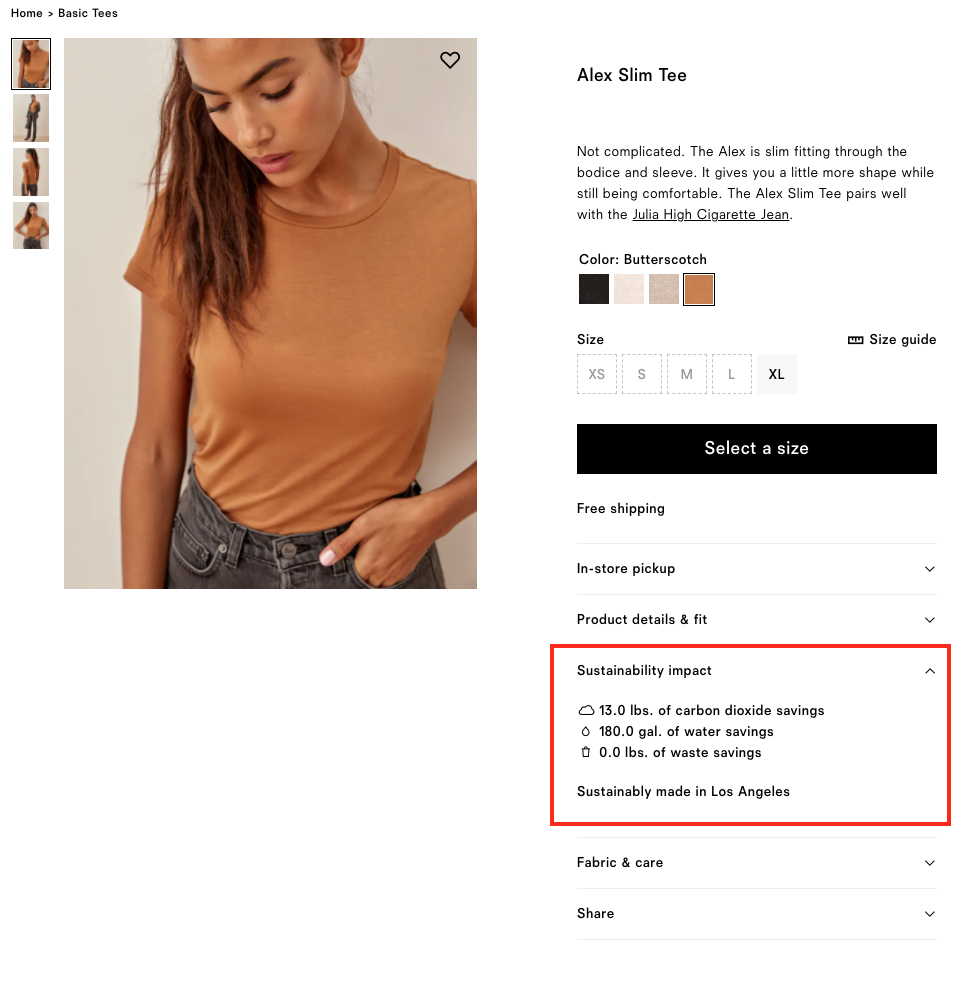
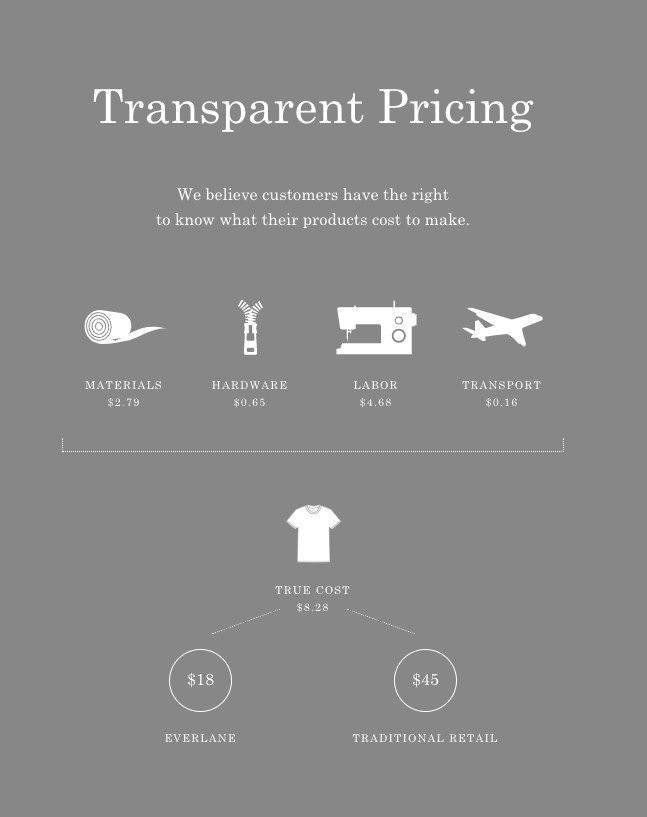
Okay, what does this mean for you and your clothing brand if all you want is to sell “X” products? If you want to create a brand, you first need to set your sights on a problem. How do you improve or fix that issue? You also have to think about will your consumer’s thoughts its a worthy mission? Are you fix their wardrobe issue, or will they support you because of the problem you’re solving?
Initially, your goal is not about scaling your clothing brand but rather how much impact you’re having on a handful of customers. Do not think of numbers just yet. Think about how your brand will improve the quality or bring something new to a niche market, then test it. If you find a product-market fit, then you can start to build on that foundation! Do not get driven by adrenaline and throw all your savings because you feel you’ll be the next Ralph Laure. Instead, understand this is a process, and set milestones to accomplish it. First, set a simple goal: to solve a problem a cohort of customers have and continue addressing their needs as you grow. It is critical to talk to your customers by asking for their feedback, what more you can do for them, and even include them in your creative process. From there, you will combine data (feedback) and your creative intuition to expand your brand growth.
Know how frustrating it is when the result doesn’t live up to your ideal? Well, first, take control by managing your expectations. Status shows, most ideas, and first business attempts fail. Also, most founders find success after a few years of blood, sweat, and tears. You also need to be aware of what it takes to achieve success. Stay realistic and note this will take time since some of the most well-known brands were never overnight successes. If you are unwilling to improve your process, you should become a contributor to another establishment. Entrepreneurship is not for everyone. Building a successful brand comes with thousands of failures and years of sacrifice. Most of the time, the outcome is high risk and low reward. But now and then, it’s high-risk and high reward. To have the high-risk and high-reward ratio working in your favor, you need experience and strategic experiments. As time goes by, you’ll become better at solving problems and making the best decision to improve your outcome.
Customers love a clothing brand with a mission. Customers also love reading about your clothing brand’s mission–how you’re planning to shake things up. It is essential for you to continuously think about your approach to building the most customer-centric based brand if your goal is to achieve greatness. Everyone goes through a series of trials and errors when building a brand, but you have to be willing to put in the work with a long-term strategy in mind. It is what separates the successful founders from the wannabes. Remember, the ten thousand hours you invested in building your brand will lead to your most significant achievements. But for now, all you need to know is, it will take commitment and tenacity. Being a founder can be a lonely journey, so expect no one will get the struggle or what you’re going through mentally, but you need to understand what it takes since that is all that matters.
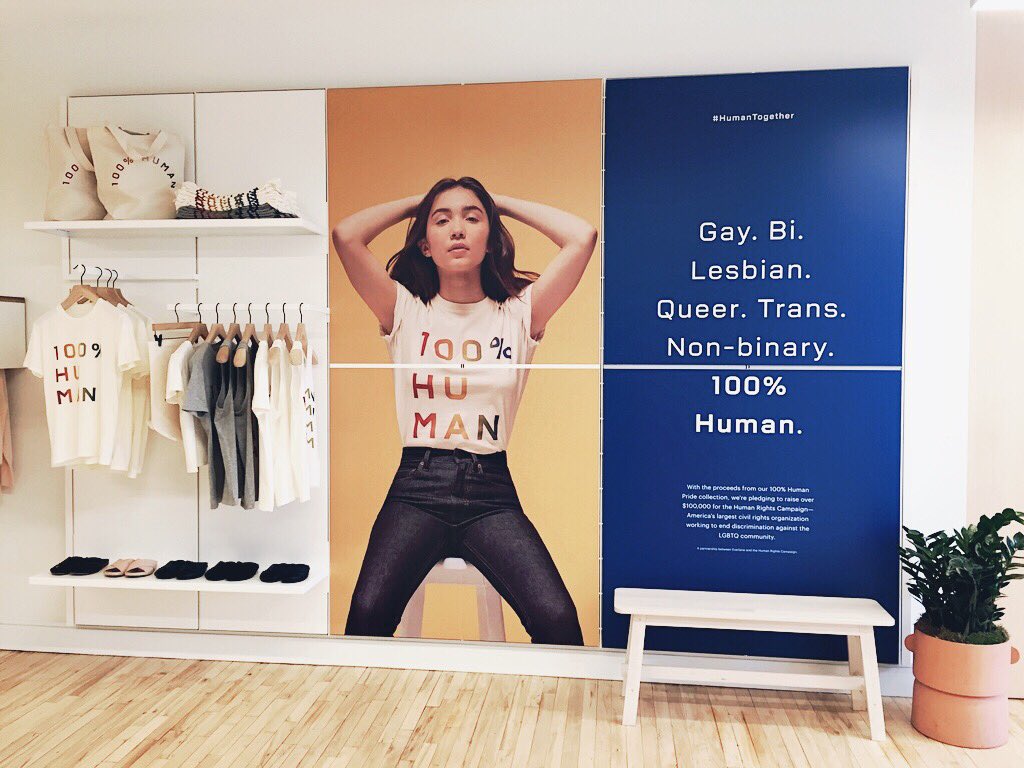

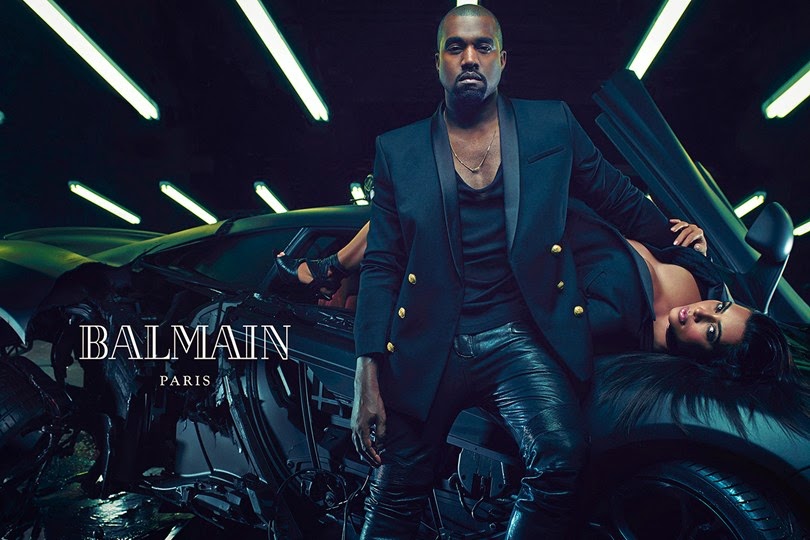

So as you saw above, all clothing brands or non-clothing brands all have a mission, a concept, or a value proposition to communicate their mission regularly with their existing customers and always educating new customers. That mission should invite consumers and enrich them somehow. Remember it is your job to find and solve a problem your ideal customers may have and sometimes they may not even know it’s a problem unless you come up with the what, how and why ?
STARTING A CLOTHING BRAND
Starting a clothing brand is more challenging and takes time to develop. Ultimately, if you plan to go in this direction, you must think of it as a career or profession. See every success you achieve and major milestones you cross to grow your clothing brand as you would in a job promotion.
A reputable clothing brand has many advantages. For example, if you look at Ralph Lauren and consider the number of clothing brands within their corporation, you are looking at an overwhelming variety of names. It can range to more than a dozen branches of clothing brands and even more of non clothing brands that belong to Ralph Lauren, a few of which we have listed below. We mentioned above how Ralph initially started his brand-building journey. Later, he expanded into a robust bridge line brand called “Polo” that turned preppy/western clothes into a cool thing to wear. He is also known for manufacturing quality clothing, which is part of what many customers appreciate about his products.
For this reason, he succeeded in winning the hearts of customers and built a globally recognized, respected, and demanded by people from all walks of life. Today people are willing to trust any product Ralph Lauren creates. Ralph Lauren sells clothing and homeware accessories, furniture, paints, and so much more.
To show you how established clothing brands can do more and be more, take a look at Ralph Lauren’s brand portfolio below. It’s not just shirts and polos anymore.





Ok, now that’s gangsta (lol) when you see a clothing brand that grew to also become very successful in selling home paint? Well, that’s a validation for a brand to undoubtedly “made it.”
A clothing brand that represents quality and exclusivity can transition to any product once you establish a name and reputation for your brand. But remember building a clothing brand does not come cheap, and it does not come easy, although AVmade Design Studio has made it significantly more affordable and easier to do. Building a brand comes with much hard work. The ability to persistently follow through on your vision requires effort and tweaking when things become challenging. Remember, building a clothing brand is the same as solving a complex science problem. Until it is solved, you must be willing to experiment, learn and work hard. But also keep this in mind when things get tough; believe in yourself and remember “every problem is solvable.”
When you’re ready to start, here is a guide on how to build a brand that can help you clarify and streamline your process.
- Have a unique point-of-view. A mission, vision, or a value proposition.
- Articulate why your mission, vision, or value proposition?
- Start in a niche market and experiment to first find product-market fit.
- Have the grit and tenacity to keep pushing forward
- Use AVmade Design Studio to streamline your manufacturing process
- Must have the willpower to learn, experiment, learn and experiment until you build your clothing brand.
Some of the statements above may seem very obvious to some readers. The fact is, some entrepreneurs are not willing to sacrifice or ‘roll the dice in a way that is necessary to build a brand. The unknown scares people in general since our amygdala is programmed to fear the unknown and work to survive today. But overcoming this fear and long-term thinking separates winners from herd thinking, which is what you need to do to find success in anything you do.
Just consider this, an average person making an income, let’s say nets 3K monthly, would most likely get an apartment and a car to make their life fit the typical mold. It’s the white picket fence ideal. In evolution, we all optimize to make things more comfortable. But for a change, do the opposite and see how it is not all that scary but rather liberating.
AVmade Design Studio Studio has made it so easy for passionate and talented but do not have the right network, capital, or know-how to go about the process. You now can create products that are high in quality, low in MoQ, and transact safely. Everything is made-to-order according to designers’ spec by the USA’s elite factories with no middleman. Now entrepreneurs can avoid what 90% of brands fail, focus on branding, and assure quality to their customers. See how it works.
5 REASONS TO START A CLOTHING BRAND
- Creative
- Love Designs
- Unique concept
- Trendsetter
- Savvy
I. CREATIVE
Creative individuals can see the design from a different point of view than most. They view the world differently, and they can be inspired and inspire others. We know ideas are interdependent, which means when they see a leaf, they can somehow imagine a product or design. Creatives always find inspiration everywhere. If you are a creative person, building a clothing brand will be a seamless fit for you. Puns intended! Since your unique perspective grows from your point of view, the more you see, the more ideas drift your way. Keep experiencing and keep learning but be careful not to go over the board. It is also important to note because your friend said you are creative does not make it so. You have to learn, understand and challenge your help to prove it to yourself and others. You have no idea how many individuals we’ve helped over the years who thought they were creative and the market thought otherwise. So be your worst critic and ask and learn from experts. Another common mistake is to throw everything at a product, assuming you’re creative. Think again; that is the opposite. Steve Jobs didn’t make Apple more complicated, nor did Diane von Furstenberg design the wrap dress over the top, but relatively simple and elegant. Even that basic t-shirt or the little black dress will need a modern update, and your creative touch may be just what it needs.
II. LOVE FOR DESIGN
A love for design is very similar to the idea of creativity discussed above. It is a part of a person’s natural talent and passion. If all you do is create using your imagination or inspiration around you to envision what could be, then that is a genuine love for design. Do you often find yourself wrapped in designing that you lose track of time? If so, it is pretty safe to assume that you could take that love and turn it into an enterprise. When passion turns into work, work feels less like a burden and more like a calling.
Most designers who love to design find themselves combing through magazines or Pinterest, often looking for inspiration to create their ideal products. As the designer develops their skills, they will look at someone else’s work and understand how and where to improve it. If this personality describes you, building a clothing brand is a perfect way to showcase your skills. Not only will you find it to be a fulfilling process, but also a career that can create an excellent reputation for you. Picasso is known for saying, “Good artists copy, but great artists steal.” He did not mean to go around knocking off other creatives’ artists! that is just WRONG. What you should take from it should be, look at another artist’s work and improve it—improving on the original concept and making it your own. Appreciate a unique design enough to have something authentic to add to the conversation.
III. UNIQUE CONCEPT
Having a unique design concept can mean a product or mission. When it comes to a unique concept in a product, the question starts, do others appreciate your point-of-view. Maybe you are a person who has a very creative yet specific look that is unique. Unique is what makes iconic brands.
- Take the example of Alexander McQueen, whose designs featured a very dark and futuristic way of looking at clothing. His overall creative concept offers a specific point-of-view that envisions fashion pieces ahead of their time in design. It doesn’t mean yours has to be an avant-garde concept, but this is to say that if you have a unique way of looking at things, then you have the potential to build a clothing brand on top of that concept. If you’ve developed a technique that is recognizable to your social circle, then creating a brand from it is going to be a natural next step.
When it comes to a unique concept in a mission, the question starts, does it resonate with people and society at this time? A special mission is something that solves problems rather than focusing on design exclusively. A great example of this will be the clothing brand “Reformation.” Reformation is a clothing brand whose mission is to build a company around sustainability—using fabrication and making the garments as sustainable as possible. Reformation is based on a unique concept to solve today’s climate issues by creating sustainably manufactured products.
If you can execute building a unique clothing brand loved by customers and has a great mission, then that’s a recipe for greatness.
IV. TRENDSETTERS
Trendsetter represents the type of person with a certain swag on putting together an outfit that most could not. Typically, most trendsetters have a career as a stylist or work in a creative industry. They are very stylish and on-trend. Also, they’re known as the go-to advisors by many, including friends and coworkers.
Trendsetters will approach design from a very personal and individual standpoint. At the height of their career, they are usually in charge of styling successful individuals or celebrities. You have to know how to put together an outfit in ways that visually look amazing. We’re not talking about slapping a bunch of brand names on someone and calling it dope! Instead, a trendsetter understands the importance of personalization. Meaning taking to account personality, color composition, age, and body type to make an average Joe feels far from average.
Understanding a need for a specific type of styling above all will be very useful to start. Niche out and stick with that niche; don’t create urban styles this season and punk rock next. Stick with a concept you love above all, whether Urban, Vintage, Lounge, etc.
V. SAVVY
A savvy individual is either business-savvy or recruits talent to help build a clothing brand. The best example for this will be Jeff from J-Brand clothing. Jeff founded the brand “J-Brand” with celeb stylist Susie Crippen. Business-savvy individuals who can recognize and recruit talent find great success more often than other categories. You can partner up so they can design while you market and run operations—in exchange, you give them a stake in the company to work as hard as you. J-brand was a very successful clothing brand that did over 100M annual revenue at its peak.
Other business savvy individuals will hire a team to go after certain trending concepts or build a clothing brand as a close second follower. Meaning, they see a clothing brand’s up-and-coming trending popularity, and they strategize to go after the same concept as a close follower. If the clothing brand they picked to follow then succeeds, they are very likely to succeed. Their level of success will generally depend on how successful the clothing brand they closely followed at the early stage. Other times they will surpass the brand in performance simply because they are better operators. Ex; of this will be, when H&M started to form fame in the early ’70s, Zara was born as a close follower, which later surpassed H&M in growth and value exponentially. Ultimately a savvy business operator can partner with a talented designer or follow closely to build a brand.
WHAT IS A CLOTHING LINE?
More often than not, a clothing line is found by a business-savvy individual who will start with a goal to buy and sell as a stock trader would. You will need to be looking at the market shift or data to make your buying and selling decisions. You will find many of these clothing lines trading exclusively on places like Amazon, eBay, or other similar platforms whose goals and mission are focused on buying and selling products that are hot and trendy today. It could be due to a lack of understanding of how to go about building a brand or simply because their interest is focused mainly on monetary gain only. It is imperative to understand and outline what your goal is and work back from it.
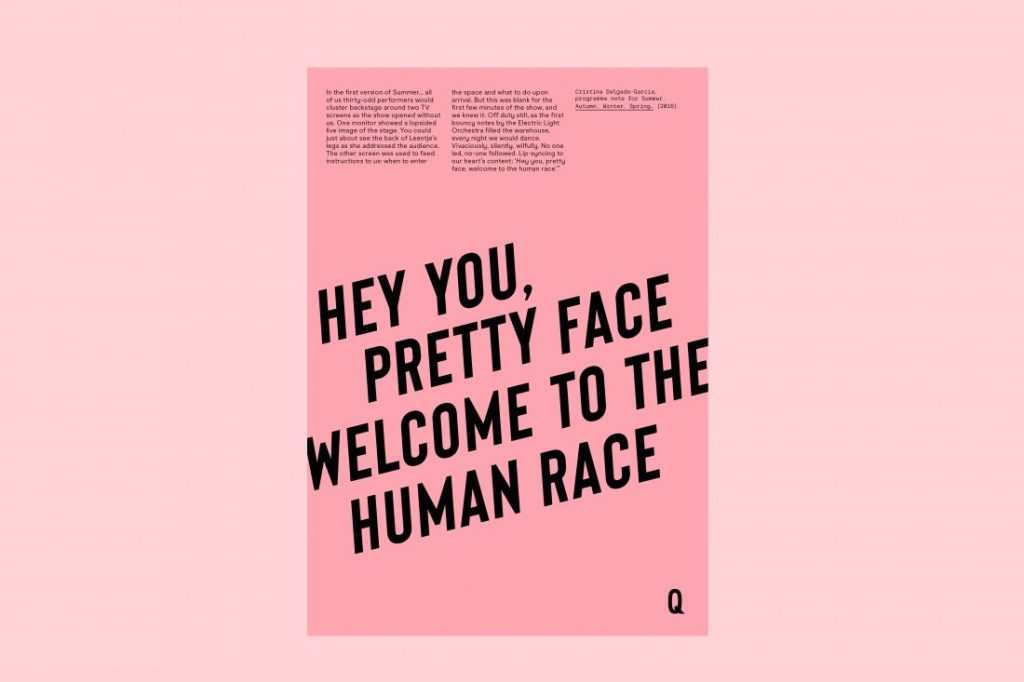
STARTING A CLOTHING LINE
A clothing line usually refers to a branded product purchased by entrepreneurs whose business outlook is to trade quickly and always switch it up rather than sticking with the concept. For the most part, those who own a clothing line do lack an artistic point of view or a vision. But they can be great operators like Amancio Ortega and build the most successful clothing line, which later became a clothing brand known as Zara. Although it is rare to hit that scale as a clothing line, for the most part, they will sell a trendy product that’s hot on the market and switch it up following mass-market trends. It is hard to create a brand identity following his playbook. You will always need a third-party platform like Amazon to do your trading and exchange unless your goal is like Amancio and Bezos to build these platforms yourself. In that case, better look for a large pool of capital and investors. The business model will always be about how cheap you can sell it and how fast you can produce it. If done correctly, it can generate a high monthly or better.
3 REASONS TO START A CLOTHING LINE
- Enjoys Trading
- Business Minded
- Thrive on Change
I. ENJOY TRADING
A trader is a person who loves wheeling and dealing. If you’ve ever seen a marketplace in places like Istanbul or Marrakech, then you get the idea. You can see this type of trading taking place all day by wheeling and dealing. The only difference now is that the founders are implementing their passion online. It’s all about negotiating a price for both sides of the deal. Every kind of gimmick you ever saw on someone’s site to get you to buy is a reflection of this type of founder. Great examples of these brands are Fashion-Nova, Shein, Boohoo ect. They enjoy the process and find it intriguing and exciting.
Is a clothing line the way to go? Well, the concept of building a brand may not necessarily resonate with everyone since having to wait and strategize for a long time frame does not pair with their mindset.
II. BUSINESS MINDED
A business-minded person is very savvy but doesn’t necessarily care about branding at a premium scale. For the most part, they trade products that are always easy to sell. They know how to invest by making sure the product they buy and sell meets today’s consumer style needs but may not necessarily look to make their clothing line their long-term legacy. In other words, they may stick to a specific type of clothing and not shift their design around, unlike traders. They are founders who buy a merch-product, add graphics to it, and sell it for a profit. Indsight looks like a brand, but behind the scenes, they are buying and selling.
III. SIDE-HUSTLE
Maybe you’re grinding away nine-to-five Monday through Friday. It’s in your “off” time that you lose yourself in your side hustle. For individuals who are doing it as a side hustle, anything goes. Because clothing lines depend on the dynamics of fashion trends, this is where they can get that jolt of excitement. The clothing line has to be ‘of the moment’ even if it is a throwback style.
CLOTHING BRAND MEETS A CLOTHING LINE STRATEGY
What happens if you combine a clothing brand concept with a clothing line strategy? The best example of someone who spun a clothing line to become a global phenomenon of a clothing brand is Zara’s founder Amancio Ortega. He started with a strategy for a clothing line. Although Zara was a clothing line at its inception, it soon became a highly successful international household name. Pay attention to Zara’s example by looking at the following:
- Business strategy
- Number of clothing lines
- The speed at which they shift product selection
You can immediately tell ZARA is all about leading the pack into seasonal trends by switching it up fast as the market evolves. Amancio Ortega started as a retailer selling his own branded clothing line by copying high-end designers and making it available for the masses at an affordable price. This strategy makes Zara a household name today that surpasses companies like Ralph Lauren and Gucci by 10-fold in gross sales. Remember, we are saying that someone with a clothing line approach can find a way to build a great brand. Hard, but possible. Again, this is not someone who makes some drop-ship approach or buys and sells mediocre products on Amazon.com or Wish. We are also not discussing companies that sell clothing today and cosmetics products tomorrow. That type of business is called flipping, and it has no kind of structure.

Zara has a clear understanding of how to read trend data to determine what type of clothing and what country or state it will do well weekly. They also take into account how to get their products where they need to go quickly. Zara has a very elaborate and systematic approach that continues to push the envelope.
ZARA currently owns hundreds of clothing labels and 2000+ stores globally. It outranked some brands’ growth sales, including Ralph Lauren’s, by 10-20x in the past two decades. This is to show you the possibility of what a successful founder can accomplish with a little luck and attention to detail. Implement this approach can be extraordinary if done right.
Remember, if you only plan to implement and follow the strategy of clothing lines, know that there is a harsh truth. Most do not ever make it to the mainstream. You usually see these clothing trading on platforms like Amazon, eBay, and elsewhere with the bare minimum to no brand recognition. The main reason is most clothing lines cannot move quickly enough with the new products they desire to sell and also compete cost-effectively.
Consider this example.
Reality 1 :
Let’s say you are currently selling t-shirts, but you notice denim is hot. Still, you don’t have a strong relationship with a clothing manufacturer that works with denim. Already you’re in a bind. So remember you are working as a startup or someone with limited capital; you now have to develop and build a relationship with a denim clothing manufacturer, which takes a long time. It can easily take anywhere from 6 to 12 months before you have a product on hand, and guess what happens within that amount of time? By the time the denim clothing manufacturers are on board, the trend has come and gone.
Reality 2 :
Initially, even if the clothing manufacturer takes you on as a client, it doesn’t mean you will become their production priority. You must keep their production line at capacity month after month to be a priority. If not, you will be at the bottom of their production to-do list. What is a significant monthly volume in the apparel industry? Anywhere around 10K+ units to start.
Reality 3 :
Let’s say you also don’t have much capital, and you are looking to do low MOQ to market test the product. Even if the clothing manufacturer is willing to do a small MOQ, remember they will need more time than their average lead time since they will look at it like they are doing you a favor, which is true. Their priority will always be to manufacture clothing for more significant and better companies. Can you blame them? Don’t take this personally. It is a business decision that takes into account overheads and other fundamental factors. Most factories will laugh at you for even asking to do 100-300 units.

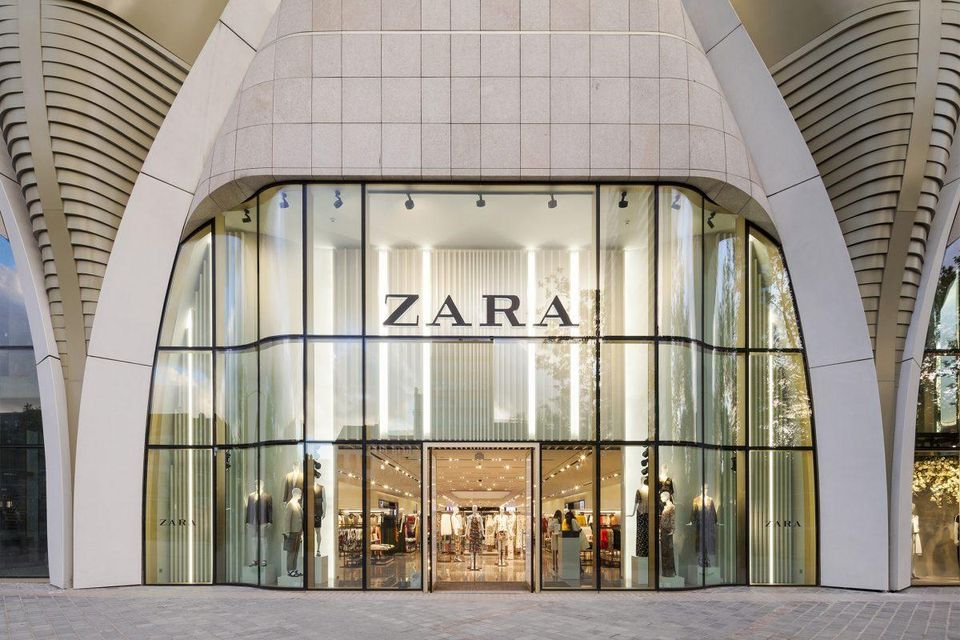
By the time you have your clothing lines concept out on the market and conduct product testing, that train has long gone, and fashionistas are welcoming a new set of fashion trends. If not well-strategized and capitalized, the slower you act; months of setbacks can turn into years. So if you evaluate these options closely, consider the following possible challenges:
- Contacting a new batch of clothing manufacturers and establishing a relationship every time you add a new product since every legit factory has a specialization.
- Suppose you buy products from a distributor or wholesaler who acquired the items at a markup. In that case, this will kill your margin, and your competitor will outprice you.
- If you want to start a vertically integrated clothing manufacturer like Zara-make sure you have millions to burn as it does not guarantee your success.
Since brands like Zara have multi-billion vertically integrated factories, they can control their entire production process. They have the freedom to move any way they see fit. You don’t have that kind of freedom, so you need a different approach to start, and later as you gain capital strength, you can also allow yourself to take risks as you see fit.
CONCLUSION
As a final reminder, it is imperative for entrepreneurs to honestly evaluate their skill sets and then consider what type of business they CAN build. Use the information above to guide the decisions and direction best suited to your personality type and business goals. Do not live in a misguided bubble, thinking you are “type A” when you are actually “type B” or thinking you can do “X” while they can only do “Y” This lack of clarity is the biggest downfall an entrepreneur can face. Be honest with yourself and own up to what you enjoy and what you can do NOW. It doesn’t mean to dream small; it means set milestone-based goals.




